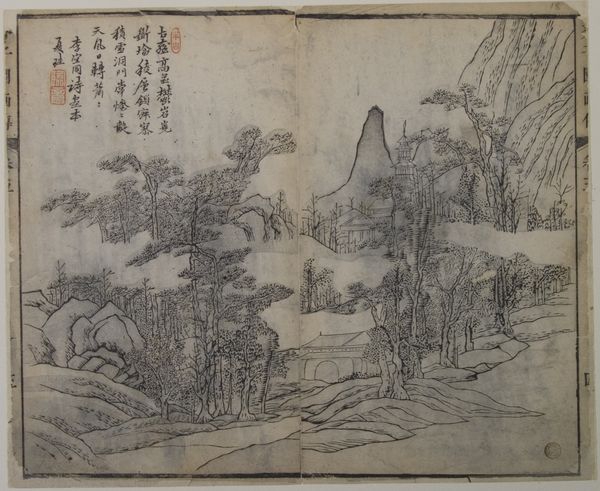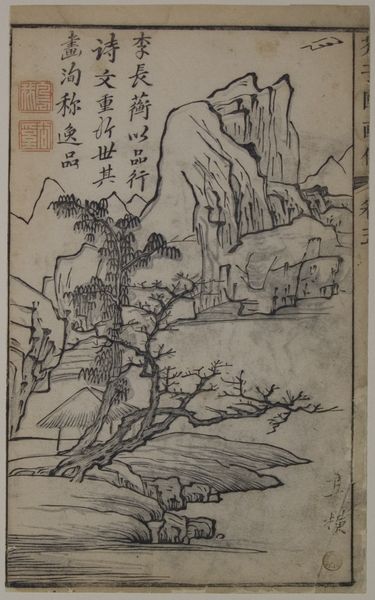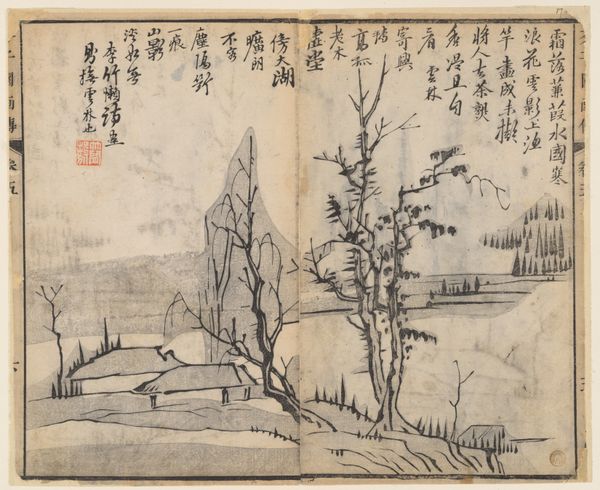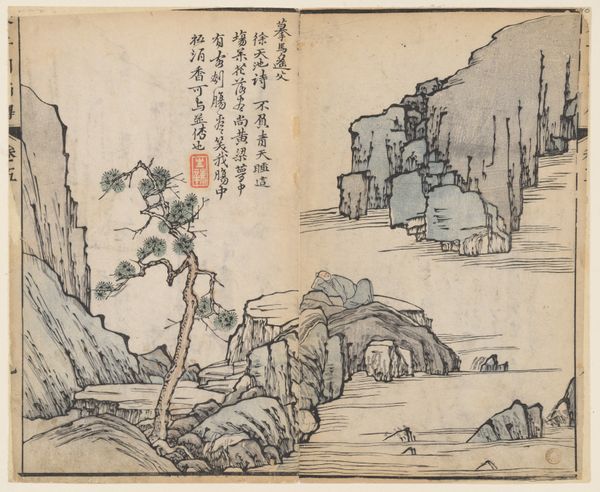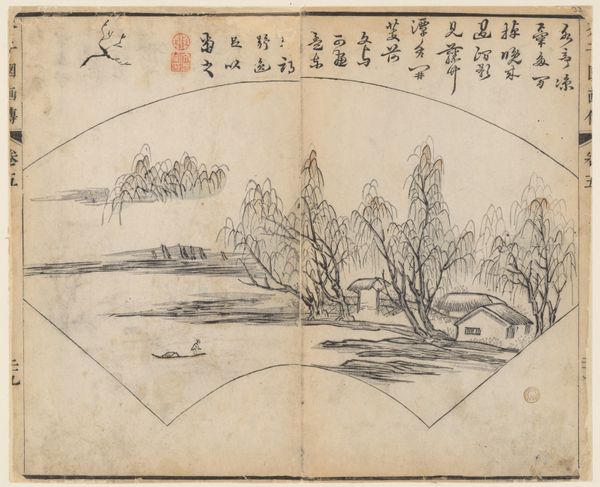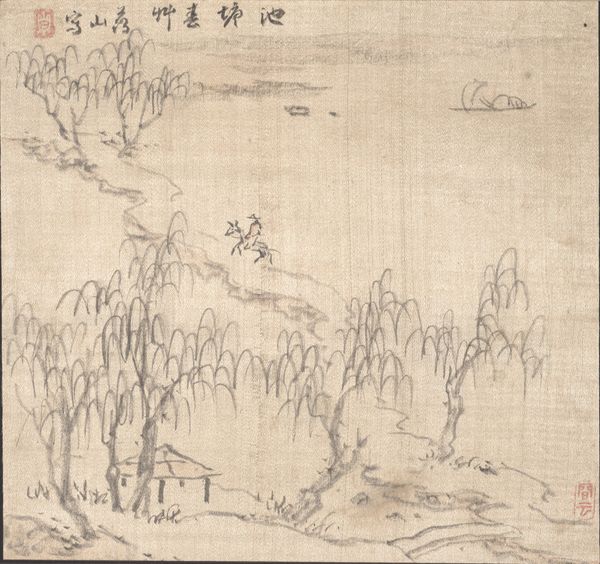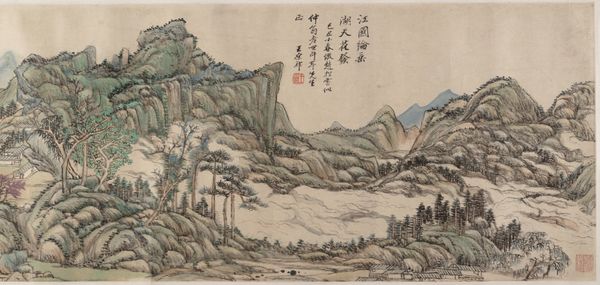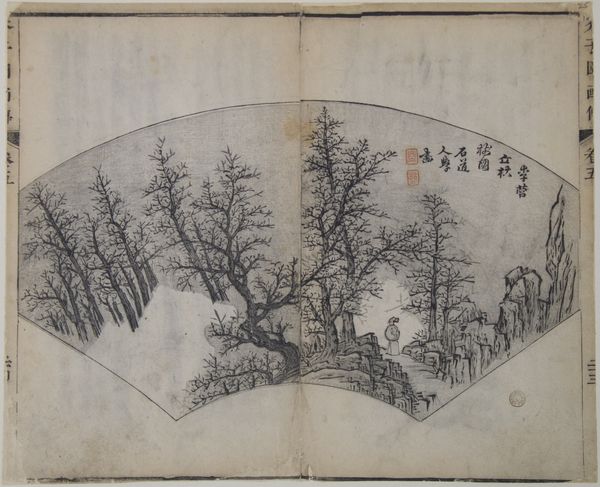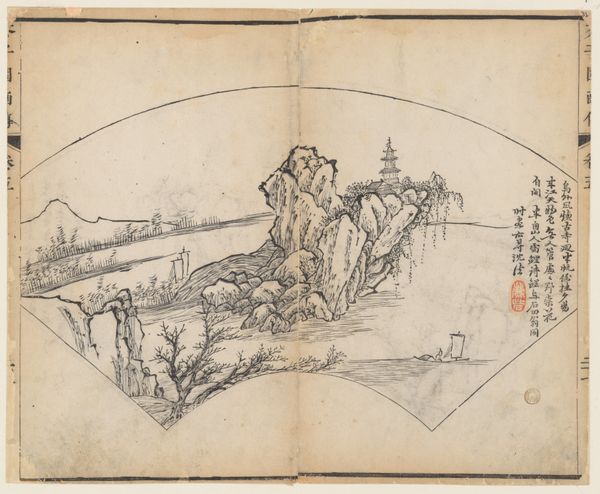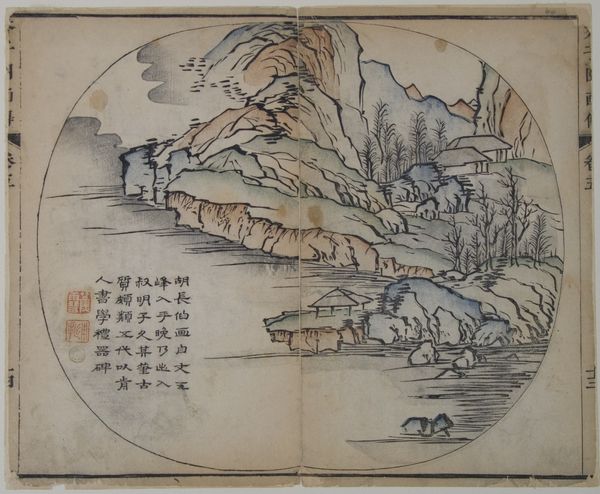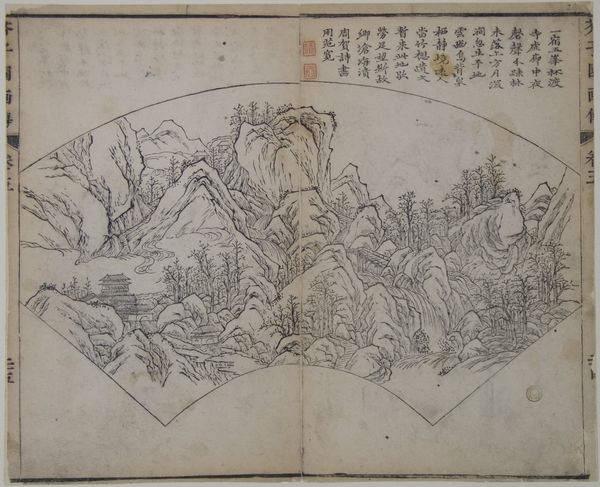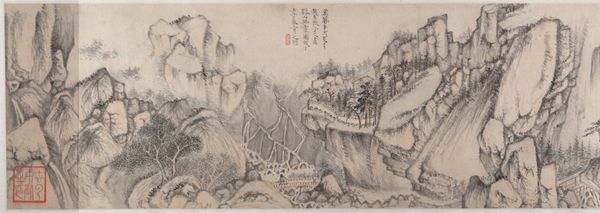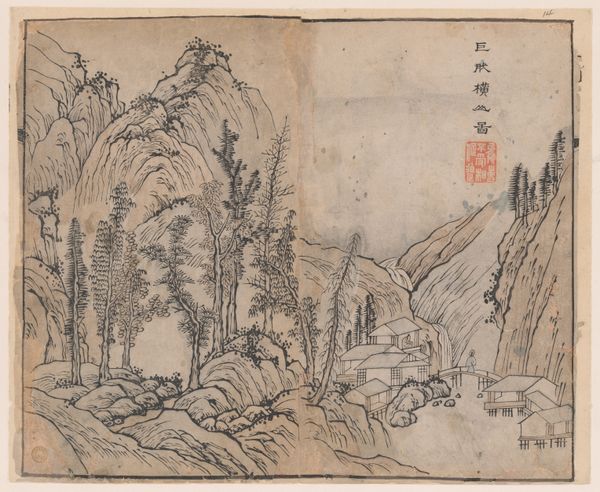
drawing, painting, print, paper, ink
#
drawing
#
ink painting
#
painting
# print
#
asian-art
#
landscape
#
paper
#
ink
#
calligraphy
Dimensions: 9 5/8 x 11 13/16 in. (24.4 x 30 cm)
Copyright: Public Domain
Editor: We’re looking at a page from *Jie Zi Yuan*, an undated work by Xu Wei, rendered in ink on paper. It depicts a landscape, and to me, the most striking element is the contrast between the bare, almost skeletal trees, and the solid, block-like buildings. How do you interpret the arrangement of these visual components? Curator: Formally, the piece engages with binaries, light and dark, sparse and dense, foreground and background. The artist is playing with spatial recession, using ink washes to create depth but simultaneously flattening the picture plane with strong linear elements. Notice how the calligraphic inscriptions aren't mere addenda, but integrated structural components of the design. What compositional purpose do they serve? Editor: I suppose they add another layer of texture, contrasting with the organic lines of the landscape and pushing the image towards abstraction? Does that reading align with a formalist approach? Curator: Indeed. Consider how the textual elements contribute to the overall surface tension, working in harmony with the deliberate arrangement of the other visual components to form a unified, yet dynamic, whole. It prompts us to consider not just what is depicted, but *how* it is depicted, and the very nature of representation. Note that our reading, divorced from historical or biographical concerns, confines our focus solely to these elements and their interplay within the artwork's visual structure. What, if anything, has this approach clarified? Editor: It highlights how much the individual parts contribute to the feeling conveyed by the piece and to its overall construction. Thank you for focusing my attention on that. Curator: A fruitful conversation.
Comments
No comments
Be the first to comment and join the conversation on the ultimate creative platform.
